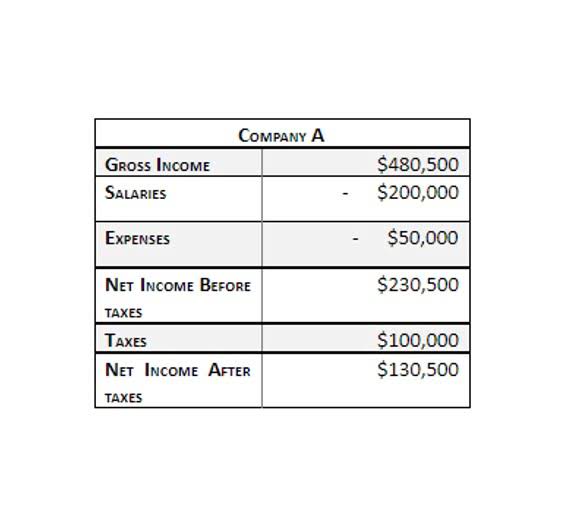
Liabilities is one of the five main types of accounts in accounting and bookkeeping. These are your debts payments, and other obligations you must render. It isn’t uncommon for business owners to take out loans to put up shop and fund operations. In 2021, 31% of small businesses in the U.S. applied for traditional financing with some likely going for other lending options. Additionally, over a billion transactions across the globe are credit.

Contingent Liabilities on Financial Statements
A current asset whose ending balance should report the cost of a merchandiser’s products awaiting to be sold. The inventory of a manufacturer should report the cost of its raw materials, work-in-process, and finished goods. The cost of inventory should include all costs necessary to acquire the items and to get them ready for sale. Things that are resources owned by a company and which have future economic value that can be measured and can be expressed in dollars. Examples include cash, investments, accounts receivable, inventory, supplies, land, buildings, equipment, and vehicles.
What is a Long-term Liability?
If the event is uncertain or the cost is unknown, long term liabilities list the liability is disclosed in the company’s notes but not recorded on the balance sheet. A lease liability is the obligation a business has to make payments over time for using an asset it doesn’t own. Instead of buying the asset outright, the company agrees to pay for its use, often in monthly or annual installments. Lease liabilities are another important example of long-term liabilities that many businesses deal with.
Are Long-Term Liabilities bad for a company?

Contingent liabilities are potential obligations that depend on fixed assets the outcome of an uncertain event. They’re not guaranteed but are recorded if the event is likely to happen and the cost can be reasonably estimated. For example, if a company expects to pay $10 million in pension benefits over the next 20 years, this entire amount is a long-term liability. Companies estimate how much these benefits will cost in the future and record them as long-term liabilities. Pension and post-retirement obligations are another important example of long-term liabilities. These represent promises a company makes to its employees for benefits like pensions and healthcare after they retire.
Accrual method accounting

On the balance sheet, deferred tax liabilities are listed as long-term liabilities. For example, if a company owes $500,000 in taxes due to timing differences, this amount is recorded as a deferred tax liability until it’s paid. These financial obligations, amounts owed to external parties, are known as liabilities.
The principal reduction of any loan liability is never an expense and since it is not an expense is never calculated in profit or loss. The use of those funds may format not be an expense but those are separate transactions. Here’s some answers to commonly asked questions about understanding liabilities in accounting.
The book value of an asset is the amount of cost in its asset account less the accumulated depreciation applicable to the asset. The book value of an asset is also referred to as the carrying value of the asset. An asset account which is expected to have a credit balance (which is contrary to the normal debit balance of an asset account). For example, the contra asset account Allowance for Doubtful Accounts is related to Accounts Receivable. The contra asset account Accumulated Depreciation is related to a constructed asset(s), and the contra asset account Accumulated Depletion is related to natural resources. A record in the general ledger that is used to collect and store similar information.
Bonds Payable

When thinking about “examples of long-term liabilities,” long-term debt is always at the top of the list. Being able to recognize short-term and long-term liabilities is essential for evaluating a company’s liquidity and overall financial health. While both represent obligations a business must fulfill, the key distinction lies in their payment timelines and how they affect financial planning.
The income statement reports the revenues, gains, expenses, losses, net income and other totals for the period of time shown in the heading of the statement. If a company’s stock is publicly traded, earnings per share must appear on the face of the income statement. Liabilities aren’t just doom and gloom—they’re actually a vital part of how businesses finance their operations.
- Analysts love to use financial ratios involving long-term liabilities to gauge risk and stability.
- There are several different types of liabilities that are outstanding for various periods of time.
- We have two car payments and the vehicles are set up as fixed assets with the loan as long term liabilities.
- Long-term liabilities represent financial obligations that extend beyond one year.
- When a specific account is identified as uncollectible, the Allowance for Doubtful Accounts should be debited and Accounts Receivable should be credited.

Consider whether you can realistically afford higher interest payments before taking the plunge. The current portion of long term liabilities are the ones that are due within the next year or within your business’s next operating cycle. Note that any tax liabilities you have will not be in this same section. That Mental Health Billing part of the accounting system which contains the balance sheet and income statement accounts used for recording transactions. Liabilities also include amounts received in advance for a future sale or for a future service to be performed. Liabilities (and stockholders’ equity) are generally referred to as claims to a corporation’s assets.